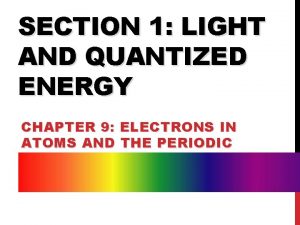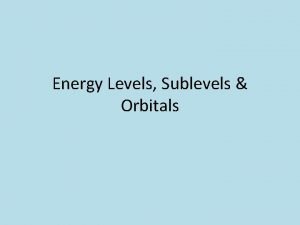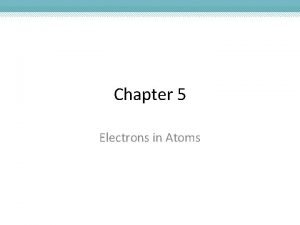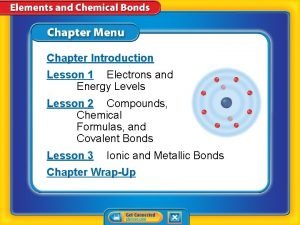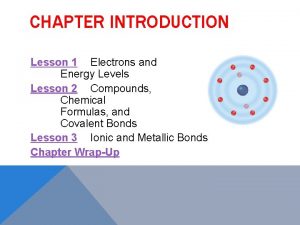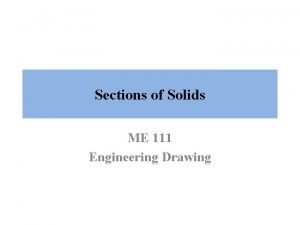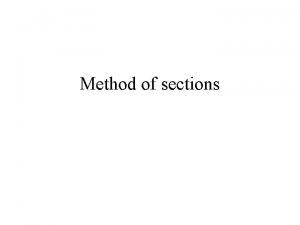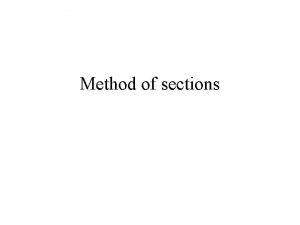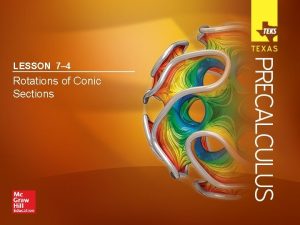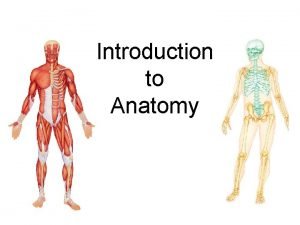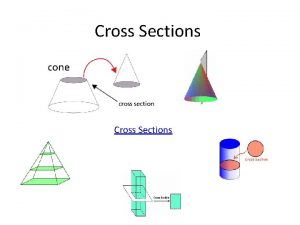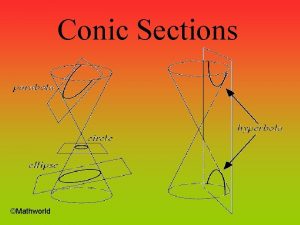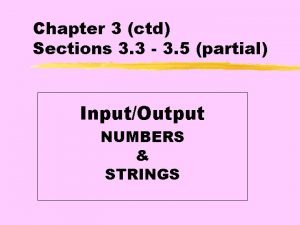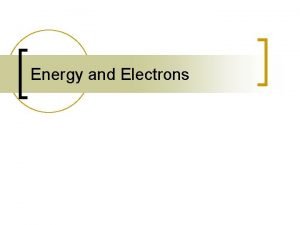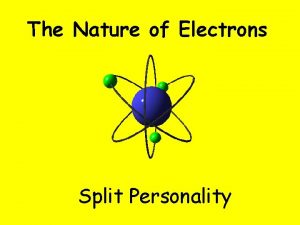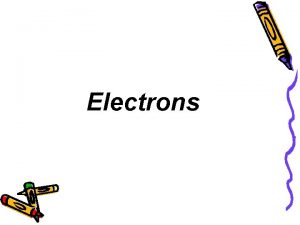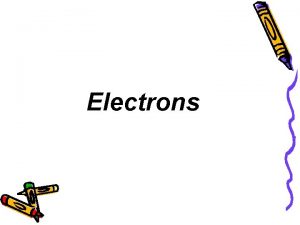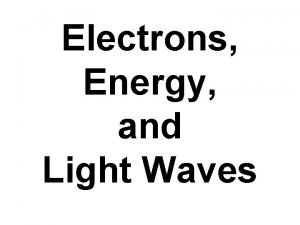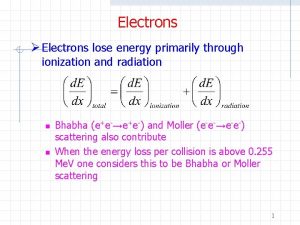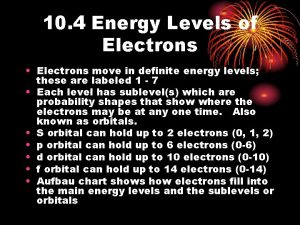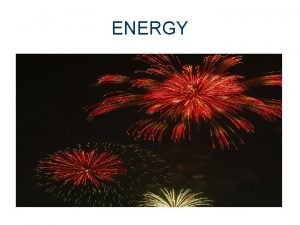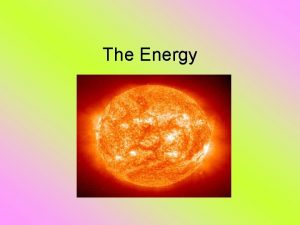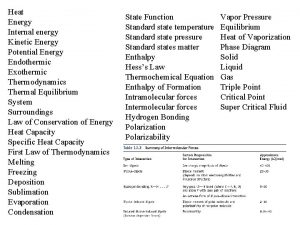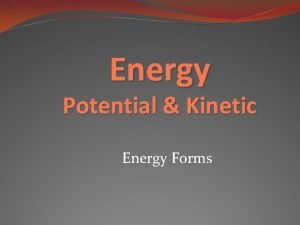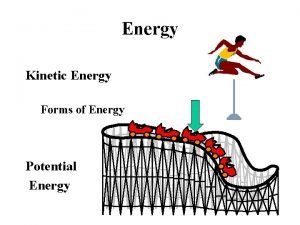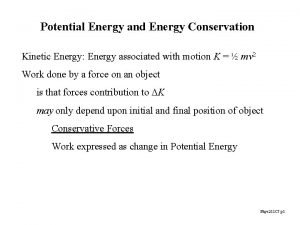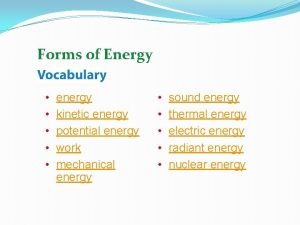Electrons Sections 2 5 2 7 Electrons energy







































- Slides: 39

Electrons Sections 2. 5 -2. 7

Electrons energy levels • Chemical properties are determined by the electrons • Not randomly dispersed in the cloud • Cloud contains discrete energy levels (or shells) which contain a specific number of electrons 32 18 8 2 + nucleus 2

Address Analogy • If you think of electrons as people, you can locate the electron using an address • Start with least specific information, the shell o “city part” of the address • Next is more specific, the subshell o “street part” of address o Dependent on city number • More specific still, the orbital o “house part” of address o Dependent on street letter • Each orbital holds a maximum of two electrons o Two people per house 3

Shells (n) • Also known as energy levels • Numbered n = 1, 2, 3, etc. o Roughly correspond to periods in periodic table • Lower “n” shells are smaller, thus hold fewer electrons • Electrons in lower “n” shells are closer to the nucleus o Held more tightly o Have lower energy 4

Subshells • Energy shells are divided into subshells • Use letters s, p, d, and f o Always in that order, s is lowest in energy • Number of subshells depends on “n” • Subshells become more complicated as they increase in energy City: 3 Street: d City: 1 Street: s City: 2 Street: p City: 3 Street: p City: 2 Street: s City: 3 Street: s 5

Orbitals • An orbital is a region of space where it is statistically probable to find electrons • Each orbital holds a maximum of two electrons • A particular type of subshell contains a specific number of orbitals Street: d 5 houses Street: p 3 houses Street: s 1 house 6

Orbital Shapes s p d 7

Electrons • Electrons are located inside orbitals, in a subshell, in a shell • There is a maximum of two electrons per orbital Street: d 2 2 2 5 houses Street: p 2 2 3 houses Street: p 2 2 2 3 houses Street: s 2 2 2 1 house 8

Summary Shell “city” Subshell “street” Orbitals “houses” Electron “people” Max Electrons in shell 1 s 1 2 2 2 s 1 2 8 p 3 6 s 1 2 p 3 6 d 5 10 f 7 14 3 4 18 32 9

Example #1 How many electrons are in each of the following shells/subshells? a. b. c. d. e. f. 4 f n=3 2 p n=1 3 d 5 s 10

Example #1 Solved a. 4 f – f subshell contains 14 electrons b. n = 3 – shell 3 contains 18 electrons 2 from 3 s, 6 from 3 p, and 10 from 3 d c. 2 p – p subshell contains 6 electrons d. n = 1 – shell 1 contains 2 electrons 2 from 1 s e. 3 d – d subshell contains 10 electrons f. 5 s – s subshell contains 2 electrons 11

Orbital Diagram • How all of the electrons in an atom are arranged • Can draw a diagram for each element • Begin with the lowest energy electrons and work themselves up • Always in the same order • Will look very similar to address figure with houses, except instead of boxes, we will use lines 12

Increasing Energy Order of Orbitals 6 d 5 f 7 s 6 p 5 d 4 f 6 s 5 p 4 d 5 s 4 p 3 d 4 s 3 p 3 s 2 p 2 s 1 s __ __ __ __ __ __ __ __ __ __ __ __ __ __ 1 s 2 s 2 p 3 s 3 p 3 d 4 s 4 p 4 d 4 f 5 s 5 p 5 d 5 f 6 s 6 p 6 d 7 s 7 p __ __ 13

Filling Orbitals • Number of electrons = atomic number • Always start will lowest energy orbital • Only two electrons fit in an orbital, and they must be opposite spins • Electrons are depicted by arrows, either up or down __ • If subshell contains more than one orbital, must half-fill all orbitals in subshell before fully filling any orbital __ __ __ not __ __ __ 14

Example #2 Draw an orbital diagram for hydrogen (H), beryllium (Be), and fluorine (F). 15

Example #2 Solved H: Z = 1 1 e- 1 s__ Be: Z = 4 4 e- F: Z = 9 9 e- 2 s__ 1 s__ 2 p__ __ __ 2 s__ 16

Electron Configuration • Another way to show information from orbital diagram • Lists energy level, subshell, and number of electrons in subshell 1 s 22 p 4 • Add up the number of electrons and you’ll find Z • From example above: 2 + 4 = 8, Z = 8: oxygen • Remember, subshells have an electron limit (see slide 9) 17

Written Out Order • Same as orbital order • This order is built into the periodic table, read periodic table as though it were a book, L to R 1 s 2 s 3 s 4 s 5 s 6 s 7 s 1 s 2 p 1 s 3 p 3 d 4 p 4 d 5 p 5 d 6 p 6 d 7 p 4 f 5 f 18

How to Write Start here s 1 s 2 s 3 s 4 s 5 s 6 s 7 s p 1 p 2 p 3 p 4 p 5 p 6 1 s 2 p d 1 d 2 d 3 d 4 d 5 d 6 d 7 d 8 d 9 d 10 3 p 3 d 4 p 4 d 5 p 5 d 6 p 6 d 7 p Cl End here for Cl 4 f 5 f chlorine (Cl): 1 s 22 p 63 s 23 p 5 19

Example #3 Write the electron configuration for the following elements: a. b. c. d. e. f. Calcium (Ca) Bromine (Br) Nitrogen (N) Antimony (Sb) Rubidium (Rb) Iron (Fe) 20

Example #3 Solved c. a. e. f. b. d. 21

Example #3 Solved a. Ca: 1 s 22 p 63 s 23 p 64 s 2 b. Br: 1 s 22 p 63 s 23 p 64 s 23 d 104 p 5 c. N: 1 s 22 p 3 d. Sb: 1 s 22 p 63 s 23 p 64 s 23 d 104 p 65 s 24 d 105 p 3 e. Rb: 1 s 22 p 63 s 23 p 64 s 23 d 104 p 65 s 1 f. Fe: 1 s 22 p 63 s 23 p 64 s 23 d 6 22

Shorthand • Based on the idea of “full shells” • Each full row is a full shell (end in group 18 with noble gases) • Shorthand notation is also called noble gas notation • Calcium goes from 1 s 22 p 63 s 23 p 64 s 2 to [Ar]4 s 2 • Argon (Ar) is the last noble gas before Calcium o Its electron configuration is 1 s 22 p 63 s 23 p 6 • 1 s 22 p 63 s 23 p 64 s 2 and [Ar]4 s 2 are the same 23

Example #4 Write out the shorthand notations for the other 5 elements from example 3. b. c. d. e. f. Bromine (Br) Nitrogen (N) Antimony (Sb) Rubidium (Rb) Iron (Fe) 24

Example #4 Solved b. Br: 1 s 22 p 63 s 23 p 64 s 23 d 104 p 5 is [Ar] 4 s 23 d 104 p 5 c. N: 1 s 22 p 3 is [He] 2 s 22 p 3 d. Sb: [Kr] 5 s 24 d 105 p 3 e. Rb: [Kr] 5 s 1 f. Fe: [Ar] 4 s 23 d 6 25

Types of Electrons • There are two types of electrons in an atom • Inner, or core, electrons and valence electrons • Inner electrons are those which are designated by the noble gas in the noble gas shorthand • Using calcium as an example: [Ar]4 s 2 1 s 22 p 63 s 23 p 64 s 2 • Inner electrons do not contribute to chemical properties, only to size 26

Valence Electrons • • • Outermost electrons in an atom Have the most interaction with other atoms Responsible for the chemical properties of an element Have the highest “n” value Valence electron Are in “s” and “p” orbitals Rest are inner electrons 27

Valence Electrons • Looking again at calcium 1 s 22 p 63 s 23 p 64 s 2 • 4 is the highest “n” value • There are 2 electrons in the s orbital and none in the p orbital so there are 2 valence electrons for calcium 28

Valence Electrons • Let’s look at electron configurations and identify the valence electrons Br: 1 s 22 p 63 s 23 p 64 s 23 d 104 p 5 Sb: [Kr]5 s 24 d 105 p 3 N: 1 s 22 p 3 Fe: [Ar]4 s 23 d 6 Rb: 1 s 22 p 63 s 23 p 64 s 23 d 104 p 65 s 1 2+5=7 valence e 2+3=5 valence e 2 valence e 1 valence e- 29

Some Connections • There is a correlation between group number and number of valence electrons • Let’s revisit the 6 elements: Ca, Br, Sb, N, Rb, Fe • Put in order of group number • Rb: group 1 – 1 valence electron • Ca: group 2 – 2 valence electrons • Fe: group 8 – 2 valence electrons • N: group 15 – 5 valence electron • Sb: group 15 – 5 valence electrons • Br: group 17 – 7 valence electrons 30

Valence Electrons • Groups 1 has 1 valence electron • Group 2 has 2 valence electrons • Groups 3 -12 have only 2 valence electrons o do not count the “d” electrons, they have a lower “n” • • • Group 13 has 3 valence electrons Group 14 has 4 valence electrons Group 15 has 5 valence electrons Group 16 has 6 valence electrons Group 17 has 7 valence electrons Group 18 has 8 valence electrons 31

Valence Electrons • Elements in a group have similar chemical properties because they have the same number of valence electrons • They will interact with other atoms in a similar manner • Fluorine (F) and chlorine (Cl) are both in group 17 so they both have 7 valence electrons • They have very similar chemical properties 32

Example #5 How many valence electrons do the following elements have? a. b. c. d. Carbon (C) Sodium (Na) Nickel (Ni) Phosphorus (P) 33

Example #5 Solved a. C: 1 s 22 p 2 4 valence electrons b. Na: 1 s 22 p 63 s 1 1 valence electron c. Ni: 1 s 22 p 63 s 23 p 64 s 23 d 8 2 valence electrons d. P: 1 s 22 p 63 s 23 p 64 s 23 d 104 p 3 5 valence electrons group 14 group 10 group 15 34

Electron Dot Symbols • Number of valence electrons around symbol • One dot on each side first then you can pair the dots H C O Number of valence electrons: 1 4 6 7 Electron dot symbol H C O Cl Cl 35

Electron Dot Symbols • Doesn’t matter which side you start on N N 36

Example #6 Draw the electron dot symbols for sulfur and phosphorus. 37

Example #6 Solved The symbol for sulfur is S. S is in group 16 and has six valence electrons. • Electron dot symbol: S The symbol for phosphorus is P. P is in group 15 and has five valence electrons. P • Electron dot symbol: 38

Example #7 For the following elements determine the following: • • • Element Symbol Group # Period # Atomic Mass Number of Protons Number of Electrons Number of Valence Electrons Orbital diagram Electronic configuration in shorthand Carbon Nickel Strontium Antimony Zinc Fluorine 39
 Energy energy transfer and general energy analysis
Energy energy transfer and general energy analysis Energy energy transfer and general energy analysis
Energy energy transfer and general energy analysis Electrons in atoms section 1 light and quantized energy
Electrons in atoms section 1 light and quantized energy Sublevels orbitals
Sublevels orbitals Electrons in atoms section 1 light and quantized energy
Electrons in atoms section 1 light and quantized energy Lesson 1 electrons and energy levels
Lesson 1 electrons and energy levels Lesson 1 electrons and energy levels
Lesson 1 electrons and energy levels How many electrons are in the third energy level?
How many electrons are in the third energy level? High energy electrons
High energy electrons Volumes of solids with known cross sections
Volumes of solids with known cross sections Declaration of independence sections
Declaration of independence sections Declaration of independence sections
Declaration of independence sections Declaration of independence sections
Declaration of independence sections Ctd ich guidelines
Ctd ich guidelines Stomach parts images
Stomach parts images Sections of solids
Sections of solids Sectional top view of cone
Sectional top view of cone Cutaways and cross sections definition
Cutaways and cross sections definition Section view
Section view 3 sections of the pharynx
3 sections of the pharynx Cobol sections
Cobol sections Pga sections map
Pga sections map Parabolas in real life project
Parabolas in real life project Method of section
Method of section Method of section
Method of section Rotating conic sections
Rotating conic sections Lesson 1 exploring conic sections
Lesson 1 exploring conic sections Visceral serosa
Visceral serosa Volume using cross sections
Volume using cross sections Conic sections in everyday life
Conic sections in everyday life Sections of erg
Sections of erg Position of the body
Position of the body Cross slice
Cross slice Square pyramid diagonal cross section
Square pyramid diagonal cross section Transverse axis vs conjugate axis
Transverse axis vs conjugate axis Conic sections definition
Conic sections definition Conic sections
Conic sections Complete the square ellipse
Complete the square ellipse Chapter 9 conic sections and analytic geometry
Chapter 9 conic sections and analytic geometry Ctd sections
Ctd sections


